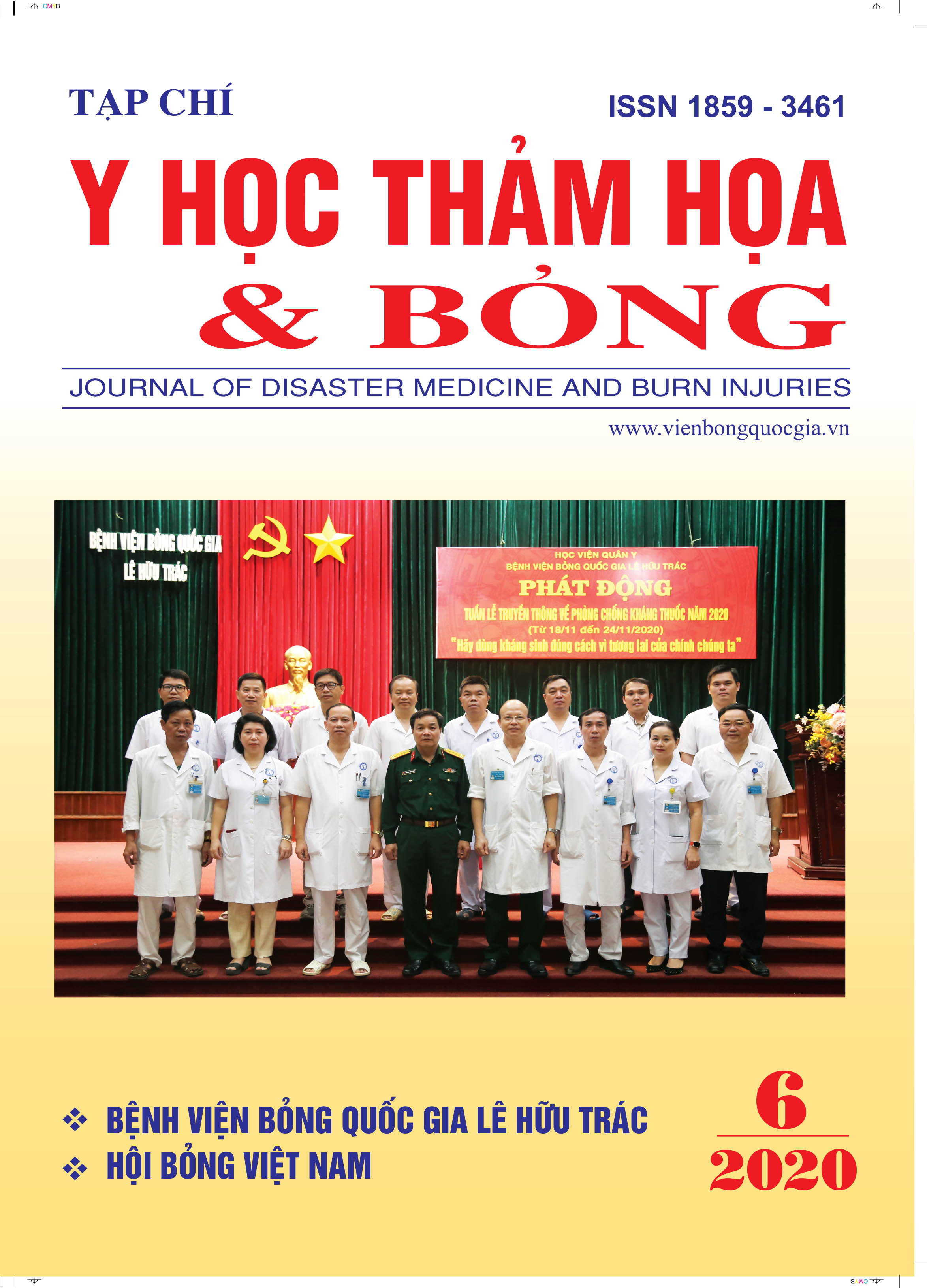The clinical and paraclinical characteristics of ventilator-associated pneumonia in adult burn patients
Nội dung chính của bài viết
Tóm tắt
This study assessed clinical and subclinical symptoms of ventilator-associated pneumonia (VAP) in patients with severe burns. The results showed that all patients had symptoms of increased sputum secretion, chest X-ray with infiltrates on both sides of the lungs. Many patients had a lot of sputum secretion (78.57%), the highest level of sputum secretion during 3 days after diagnosis of VAP, then gradually decreased, the difference was significant on the day seventh of diagnosing VAP (p = 0.03).
At the time of diagnosis of VAP, 96.43% of patients changed the color of sputum. Then the color of phlegm improved gradually, by day seventh after the diagnosis of VAP, there were 46.15% of patients with sputum became transparent. The ratio of PaO¬2/FiO¬2 decreased slowly (197.46 ± 22.79mmHg) at the time of diagnosis of VAP, then increased gradually, the difference was significant at the time after 5 days of diagnosis of VAP (p = 0.04). Bacteria grew mainly A.baumannii (53.57%). The average point of CPIS score was 7.36 ± 0.26. The mortality rate was still high with a rate of 75%.
Chi tiết bài viết
Từ khóa
Ventilator-associated pneumonia (VAP), severe burns
Tài liệu tham khảo
2. Bộ Y Tế (2015). Hướng dẫn chẩn đoán và xử trí hồi sức tích cực, Ban hành kèm theo Quyết định số 1493/QĐ-BYT ngày 22/4/2015 của Bộ trưởng Bộ Y tế, Hà Nội.
3. Advisory S., Steering S., Committee I. P. G. (2018) ISBI Practice Guidelines for Burn Care, Part 2. Burns: journal of the International Society for Burn Injuries, 44 (7), 1617.
4. Pugin J. (2002) Clinical signs and scores for the diagnosis of ventilator-associated pneumonia. Minerva anesthesiologist, 68 (4), 261-265.
5. Phạm Thái Dũng (2013). Nghiên cứu đặc điểm lâm sàng, cận lâm sàng, vi khuẩn và biến đổi nồng độ procalcitonin, protein c phản ứng ở bệnh nhân viêm phổi thở máy, Luận án tiến sỹ y học, Học viện Quân y.
6. Wunderink R. G., Woldenberg L. S., Zeiss J.et al. (1992). The radiologic diagnosis of autopsy-proven ventilator-associated pneumonia. Chest, 101 (2), 458-463.
7. Fàbregas N., Ewig S., Torres A.et al. (1999) Clinical diagnosis of ventilator-associated pneumonia revisited: comparative validation using immediate post-mortem lung biopsies. Thorax, 54 (10), 867-873.
8. Ngô Tuấn Hưng, Nguyễn Hải An, Trần Đình Hùng (2017). Đánh giá hiệu quả của lọc máu liên tục trong điều trị sốc nhiễm khuẩn trên bệnh nhân bỏng nặng. Tạp chí y học thảm họa và bỏng, 4, 60-65.
9. Chu Anh Tuấn, Nguyễn Thị Hương Giang, Phan Thị Tố Như (2015). Căn nguyên và mức độ kháng kháng sinh của vi khuẩn phân lập từ các bệnh nhân bỏng người lớn điều trị tại khoa điều trị tích cực - Viện Bỏng Quốc gia. Tạp chí y học thảm họa và bỏng, 3, 34-44.


